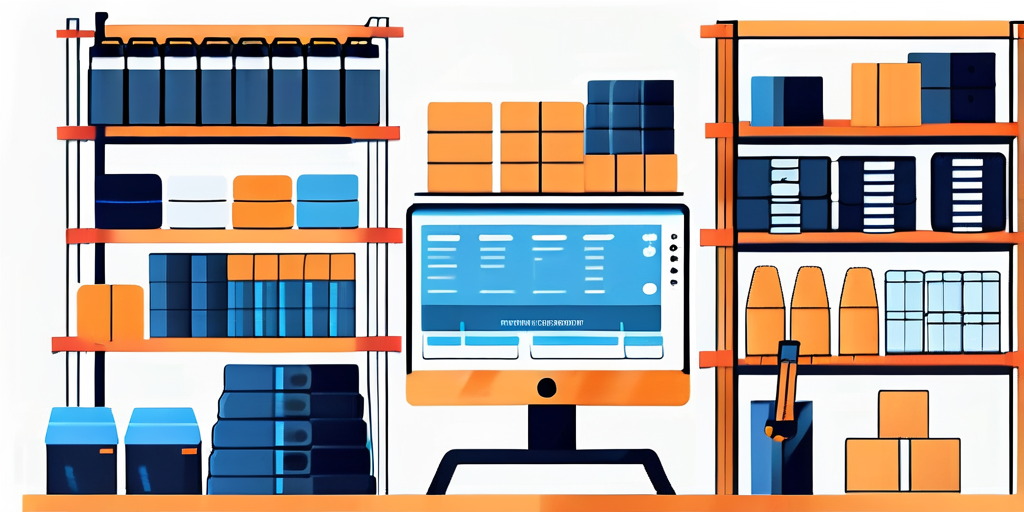10 Essential Steps to Launch a Profitable E-Commerce Store

In today’s digital age, starting an e-commerce store is a great way to turn your passion into a profitable business venture. However, the process can be overwhelming if you don’t know where to start. That’s why we’ve put together this guide to help you navigate through the 10 essential steps to launch a successful e-commerce store. By following these steps, you’ll be well on your way to building your online empire.
Refine Your Business Plan
Before diving into the world of e-commerce, it’s crucial to refine your business plan. Take the time to finalize your ideas and vision, ensuring that they align with your long-term goals. Start by identifying your target market and conducting thorough market research. This will help you understand your customers’ needs, preferences, and purchasing behaviors.
When refining your business plan, it’s important to consider various factors that can impact your success. One such factor is the competitive landscape. Analyze your competitors’ strengths and weaknesses to identify opportunities for differentiation. By understanding what sets your e-commerce store apart, you can develop a compelling value proposition that resonates with your target audience.
Another crucial aspect to consider is your pricing strategy. Determine the optimal price point for your products or services by considering factors such as production costs, market demand, and perceived value. Conducting a thorough pricing analysis will help you strike the right balance between profitability and competitiveness.
In addition to refining your business plan, it’s essential to establish a solid marketing strategy. Consider the various channels and tactics you will use to reach your target market. Will you leverage social media platforms, search engine optimization, or email marketing? Developing a comprehensive marketing plan will ensure that you effectively promote your e-commerce store and attract potential customers.
Furthermore, don’t overlook the importance of customer experience in your business plan. Consider how you will provide exceptional customer service and create a seamless shopping experience. This may involve investing in user-friendly website design, implementing a reliable order fulfillment process, and offering responsive customer support.
Lastly, as you refine your business plan, consider the scalability of your e-commerce store. How will you handle growth and expansion in the future? Anticipating potential challenges and planning for scalability will help you navigate the evolving e-commerce landscape and position your business for long-term success.
Building Your Online Store from Scratch
Now that you have a solid business plan in place, it’s time to start building your online store. Begin by selecting a reliable e-commerce platform that suits your needs. Popular options include Shopify, WooCommerce, and BigCommerce. Consider factors such as ease of use, customization options, and scalability when choosing the right platform for your store.
When it comes to selecting an e-commerce platform, there are several factors to consider. One important factor is ease of use. You want a platform that is user-friendly and intuitive, making it easy for you to manage your store and for your customers to navigate and make purchases. Another factor to consider is customization options. You want a platform that allows you to customize your store to reflect your brand’s unique identity. This includes being able to choose from a variety of themes, fonts, and colors, as well as being able to add your own logo and branding elements. Lastly, scalability is an important factor to consider. As your business grows, you want a platform that can easily accommodate your increasing number of products and customers.
Once you’ve chosen a platform, the next step is to design your website. Keep in mind that a memorable brand identity is crucial for standing out from the competition. Craft a visually appealing website that reflects your brand’s personality and values. Use high-quality images, engaging copy, and intuitive navigation to create a seamless user experience.
When designing your website, it’s important to think about the overall look and feel you want to achieve. Consider your target audience and what will appeal to them. If you’re selling luxury products, for example, you may want to create a sleek and elegant website design. On the other hand, if you’re targeting a younger audience, you may want to go for a more vibrant and playful design. Whatever design you choose, make sure it aligns with your brand’s personality and values.
In addition to the visual elements, the copy on your website is also important. Write compelling product descriptions that highlight the features and benefits of your products. Use persuasive language to convince potential customers to make a purchase. It’s also a good idea to include customer testimonials and reviews to build trust and credibility.
Lastly, don’t forget about the importance of intuitive navigation. Make it easy for your customers to find what they’re looking for by organizing your products into categories and subcategories. Include a search bar to allow customers to quickly find specific items. Additionally, make sure your checkout process is simple and straightforward, minimizing the number of steps required for customers to complete their purchase.
Crafting a Memorable Brand Identity
Your brand identity is more than just a catchy logo and color scheme. It’s the overall perception that customers have of your e-commerce store. To create a memorable brand identity, start by defining your brand’s mission, vision, and values. This will guide every aspect of your online store, from product selection to customer service.

Once you’ve established your brand’s core values, it’s time to develop a compelling brand story. Share your journey, inspirations, and passion with your customers. This will help forge a deeper connection and create brand loyalty. Don’t forget to consistently communicate your brand’s story across all touchpoints, including your website, social media channels, and marketing campaigns.
Strategies for Effective Marketing
Now that your online store is up and running, it’s time to focus on marketing. In the competitive world of e-commerce, innovative marketing techniques are essential to boost your online presence and drive traffic to your store. Start by optimizing your website’s search engine visibility through SEO techniques such as keyword research, on-page optimization, and link building.
Social media marketing is another powerful tool for e-commerce success. Utilize platforms like Facebook, Instagram, and Pinterest to showcase your products and engage with your target audience. Collaborate with influencers to reach a broader audience and leverage user-generated content to build trust and authenticity.
Streamlining Your Inventory Management
Efficient inventory management is crucial to the success of your e-commerce store. Start by selecting a reliable inventory management system that allows you to track and manage your products effectively. This will help streamline your operations and prevent issues such as overstocking or stockouts.

Implement best practices for inventory control, such as regularly revising your product catalog based on demand trends, optimizing order fulfillment processes, and utilizing automation tools for inventory tracking. By having a well-organized inventory management system in place, you’ll be able to deliver a seamless shopping experience to your customers.
Delivering Exceptional Customer Service
Exceptional customer service is one of the cornerstones of a successful e-commerce store. Go above and beyond to wow your customers at every touchpoint. From prompt and personalized responses to resolving any issues or concerns, prioritize customer satisfaction.

Consider implementing live chat support to provide real-time assistance to your customers. Offer hassle-free returns and provide clear and transparent product information. By delivering exceptional customer service, you’ll build trust, foster loyalty, and turn one-time shoppers into lifelong advocates of your brand.
Ensuring Website Security
As an e-commerce store owner, ensuring the security of your website is paramount. Protect your customers’ sensitive information by implementing essential security measures. This includes using SSL certificates to encrypt data, regularly updating your software and plugins, and conducting routine security audits.
Additionally, make sure your website is PCI DSS compliant if you process credit card payments. Display trust seals and badges to reassure customers that their information is safe. By prioritizing website security, you’ll not only protect your customers but also foster trust and confidence in your brand.
Analyzing Data for Business Growth
Data is a powerful asset when it comes to growing your e-commerce store. Establish key metrics that align with your business goals and track them regularly. This includes monitoring website traffic, conversion rates, customer acquisition cost, and average order value.
Use this data to gain insights into your customers’ behaviors and preferences. Identify areas for improvement and optimize your marketing strategies accordingly. By leveraging data to drive decision-making, you’ll be able to continuously refine and grow your e-commerce store.
Launching a profitable e-commerce store requires careful planning, strategic execution, and relentless dedication. By following these 10 essential steps, you’ll be well-equipped to conquer the world of e-commerce and create a thriving online business. Remember, success doesn’t happen overnight, but with perseverance and a solid foundation, your e-commerce store can become a profitable venture.